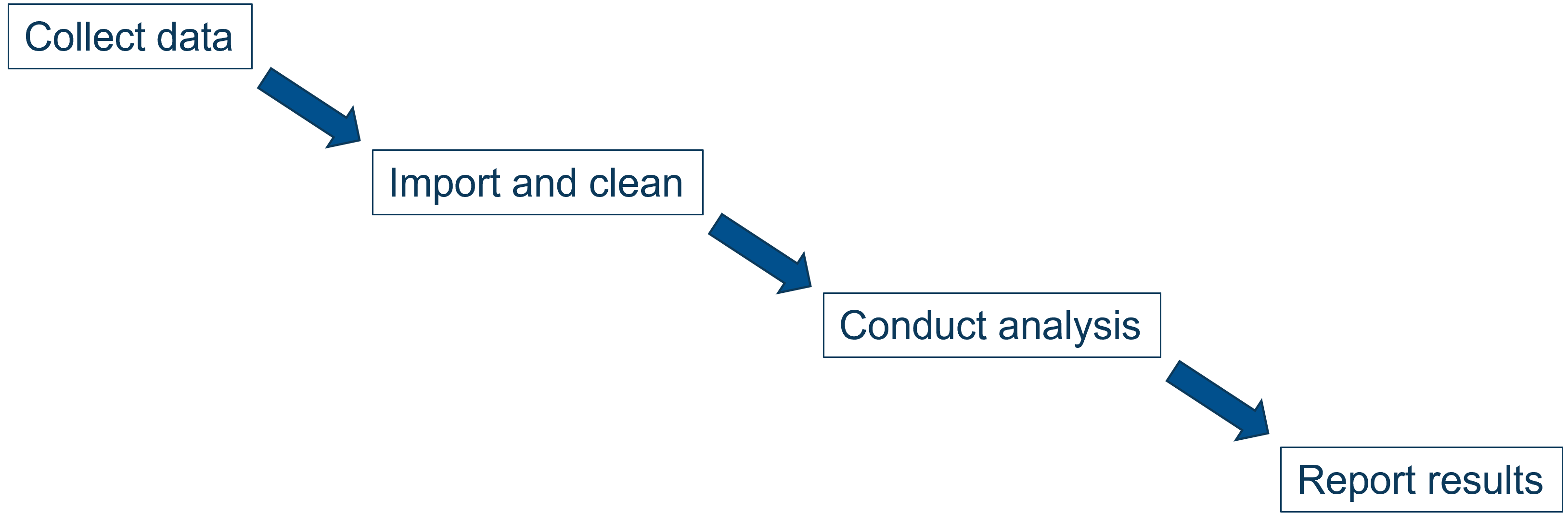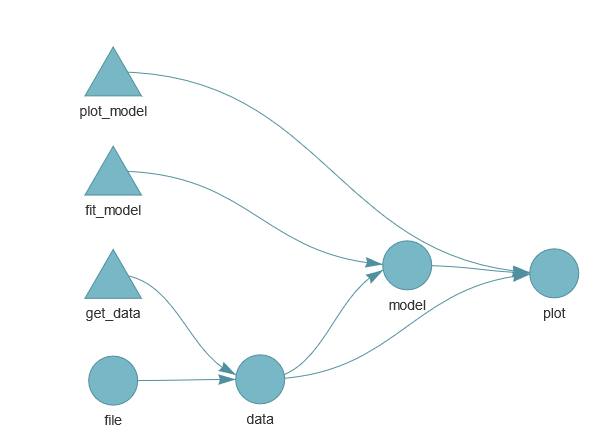Project workflows – from data to manuscript
CMOR Lunch’n’Learn
11 August 2023
Ross Wilson
Data workflow


Ideally, we would…
- Have a complete record of all analysis steps, from start to finish
- Integrate analysis into reporting of results
- Be able to share the entire project workflow with others
- Easily update the pipeline when data/analysis changes
- Maintain a common structure across projects
Solution – An integrated analysis workflow with R
Solution – An integrated analysis workflow with R
- Have a complete record of all analysis steps, from start to finish
- Integrate analysis into reporting of results
- Be able to share the entire project workflow with others
- Easily update the pipeline when data/analysis changes
- Maintain a common structure across projects
Solution – An integrated analysis workflow with R
- Have a complete record of all analysis steps, from start to finish
_plan.Rincludes (in code) all of the steps in the analysis workflow
- Integrate analysis into reporting of results
- Be able to share the entire project workflow with others
- Easily update the pipeline when data/analysis changes
- Maintain a common structure across projects
Solution – An integrated analysis workflow with R
- Have a complete record of all analysis steps, from start to finish
_plan.Rincludes (in code) all of the steps in the analysis workflow
- Integrate analysis into reporting of results
- Quarto allows us to refer to the results of our analysis directly in the report/manuscript
- Be able to share the entire project workflow with others
- Easily update the pipeline when data/analysis changes
- Maintain a common structure across projects
Solution – An integrated analysis workflow with R
- Have a complete record of all analysis steps, from start to finish
_plan.Rincludes (in code) all of the steps in the analysis workflow
- Integrate analysis into reporting of results
- Quarto allows us to refer to the results of our analysis directly in the report/manuscript
- Be able to share the entire project workflow with others
- Git & GitHub for collaborative version control
- Easily update the pipeline when data/analysis changes
- Maintain a common structure across projects
Solution – An integrated analysis workflow with R
- Have a complete record of all analysis steps, from start to finish
_plan.Rincludes (in code) all of the steps in the analysis workflow
- Integrate analysis into reporting of results
- Quarto allows us to refer to the results of our analysis directly in the report/manuscript
- Be able to share the entire project workflow with others
- Git & GitHub for collaborative version control
- Easily update the pipeline when data/analysis changes
targetstracks dependencies between analysis stages and re-runs steps as needed
- Maintain a common structure across projects
Solution – An integrated analysis workflow with R
- Have a complete record of all analysis steps, from start to finish
_plan.Rincludes (in code) all of the steps in the analysis workflow
- Integrate analysis into reporting of results
- Quarto allows us to refer to the results of our analysis directly in the report/manuscript
- Be able to share the entire project workflow with others
- Git & GitHub for collaborative version control
- Easily update the pipeline when data/analysis changes
targetstracks dependencies between analysis stages and re-runs steps as needed
- Maintain a common structure across projects
cmor.toolsbrings all of this together under a common structure
The targets pipeline tool for R
- We have briefly looked at the
targetspackage in an earlier LnL session - The key concept is an analytical pipeline: a computational workflow consisting of
- targets – the individual tasks involved in the workflow (data import, cleaning, analysis, etc.)
- methods – the code used to complete each task
- dependencies – which targets depend on the results of which other targets
targetsanalyses the pipeline, runs the code, and stores the results in/_targets/
The pipeline is described in _plan.R
_plan.R
- This is a list (an R
listobject) of targets (specified withtar_target()) - Each target specifies one step in the pipeline
- identify the raw data file
- import the data from the file into R
- fit a statistical model to the data
- create a plot showing the fitted model
- The methods for each target are defined in the functions
get_data(),fit_model(), andplot_model() targetsworks out the dependencies automatically

Quarto
- Quarto is a scientific and technical authoring and publishing system that allows us to mix text and executable R code
- Quarto documents are plain text, but can be rendered to multiple output formats (HTML, PDF, Word, PowerPoint)
- Even whole books or websites – the CMOR website is written with Quarto, as is this presentation
- When the Quarto document is rendered, any R code will be run and the result (numeric values, a table, a figure, etc.) included in the resulting output document
Quarto in a targets pipeline
- The
tarchetypespackage providestar_quarto(), which allows Quarto documents to be used within atargetspipeline tar_quarto(report, path = "report.qmd")defines a step that renders the source document"report.qmd"to a target namedreport- The source document should use
tar_load()in an R code chunk to load dependency targetstargetswill scan the source for these calls to know what the target dependencies are
cmor.tools
- Our
cmor.toolspackage (github.com/uo-cmor/cmor.tools) provides various tools to bring these ideas together and provide a common structure for managing data analysis projects
- Key ideas implemented in
cmor.tools:- A common project folder structure, to keep data separate from code separate from output
- A
targetspipeline to specify all of the steps in the workflow - Output (reports/manuscripts) etc. written in Quarto, and in the pipeline
- Version control with Git, and repository hosted on GitHub
- A few other tools for consistent formatting of outputs, etc.
- (Some analysis tools, not yet fully implemented)


cmor.tools
- We’ll use these tools to work through a simple target pipeline (adapted from books.ropensci.org/targets/walkthrough)
- You can install
cmor.toolsfrom GitHub: